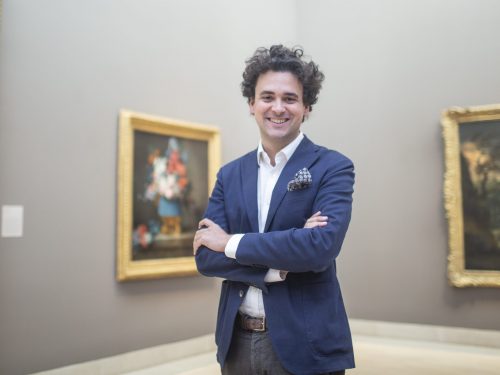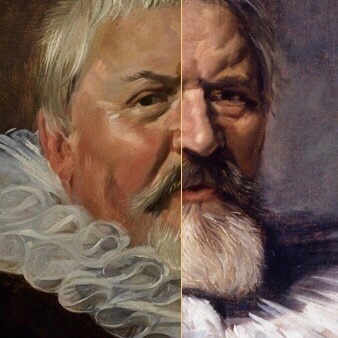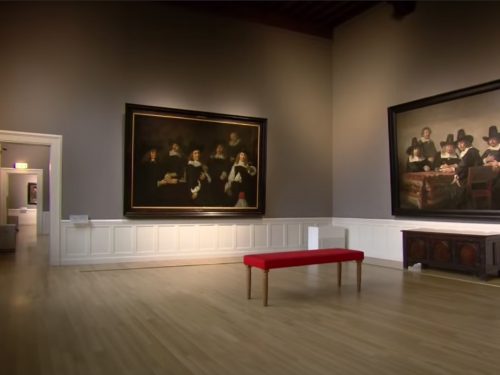ABOUT THE EXHIBITION
Frans Hals (1582/83–1666) was among the earliest artists to successfully capture the spontaneity of life in paint. Startlingly direct, Hals’s portraits give the impression that the sitter inhabits our space, while also calling attention to the act of painting itself. His realism and distinctive loose brushwork greatly influenced Modern artists of the 19th century including Gustave Courbet, Edouard Manet, and Vincent van Gogh. While Hals rarely painted multiple portraits of the same individual, Frans Hals: Detecting a Decade offers an opportunity to compare two portraits of the same sitter painted about a decade apart.
Hals was the leading portrait painter in the Dutch city of Haarlem (near Amsterdam) during the period following the Reformation when European countries were divided between Catholicism and Protestantism. As a young man, he witnessed the creation of a free and Protestant Dutch Republic; the small mercantile nation quickly became one of Europe’s most prosperous centers of trade. The region around Haarlem was one of the richest and most densely populated on earth. Unlike the Catholic monarchies in southern Europe, Protestant patrons preferred non-religious, more austere art. Dutch merchants commissioned Hals and other portraitists for the purpose of recording their likenesses and their achievements.
Pieter Jacobsz. Olycan (1572–1658), the sitter in this exhibition’s portraits, was one of the most powerful men in Haarlem. His breweries, De Vogelstruys (The Ostrich) and ‘t Hoeffeyser (The Horseshoe), brought him considerable wealth and social status. He served multiple terms as Burgomaster (Mayor) of Haarlem. These works were painted about a decade apart – the first around 1629 and the second around 1639. They not only chart Olycan’s changing appearance as he grew older, but also offer considerable insight into the evolution of the artist’s style.
VIRTUAL TOUR
Hals is known for his distinctive technique of loose, animated brushstrokes that convey the vitality of the sitter’s personality. Use the sliders below to see the difference a decade makes.
Olycan’s bushy hair was painted in short, quick dabs of white and gray paint, applied wet-on-wet (the paint was not allowed to dry between layers, thus the brushstrokes mixed into one another).
In both portraits, Hals constructed Olycan’s face in bold planes of pure color. Consider how less blended the colors are in the earlier portrait.
During this decade, Hals adopted a darker color palette. He used much more black in the later portrait.
In the decade between these two works’ completion, the artist’s technique became more controlled. Notice the number of thin brushstrokes he used to create the beard in his later portrait.
The sitter’s ruff was painted in bold strokes of white. It becomes almost abstract when seen up close, but from a distance the brushwork gives the illusion of volume.
MORE TO EXPLORE
Virtual Exhibition Talk: Frans Hals, Style, and Individuality
Watch art historian Dr. Christopher Atkins discuss the work of Dutch Golden Age painter Frans Hals and two portraits of the same sitter completed 10 years apart.
i
From the individual strands of hair on Olycan’s head to the calligraphy-like swirls of Olycan’s ruff, Hals’ technique is bold.
– Kimberly Richard, NBC DFW




